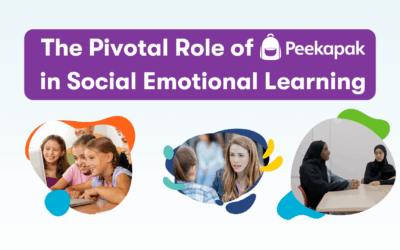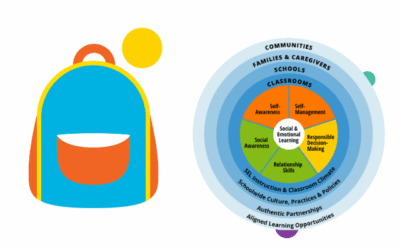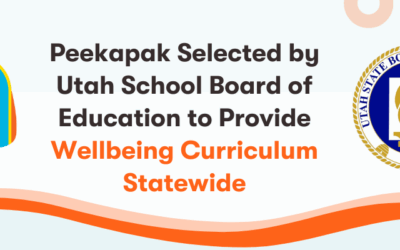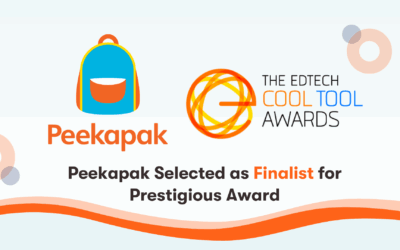By Dr. Jennifer Williams, Professor for Saint Leo University in the College of Education
As Peekapak founder, Ami Shah, and I set out to create an immersive and interactive session for our upcoming FETC presentation titled “Trending Topics in Early Literacy: Practices and Tools for the Early Childhood Classroom,” we sought ways to share relevant, research-based information that could guide practice and instruction for early childhood educators. In our work in early childhood education, literacy, social-emotional learning, and educational technology, we look to frameworks and guidance based on evidence from the field of education.
In October of 2016, in response to increased use of technology with early learners, the United States Department of Education in partnership with the United States Department of Health and Human Services published the Early Learning and Educational Technology Policy Brief. As teachers are faced with the need to make decisions on growing amounts of emerging technologies available for young students, including educational apps, digital books, interactive software, and games, this brief offers four primary guiding principles for use of technology with early learners are provided.
Guiding Principle #1: Technology—when used appropriately—can be a tool for learning.
According to the DOE, developmentally appropriate use of technology can be beneficial to young children. As technology enables students to extend learning beyond the walls of their classrooms and homes, it can offer experiences that before were nearly impossible. Recommendations for use include:
- use of technology to meet specifically stated objectives
- meaningful integrations of technology with other hands-on learning tools, including materials and manipulatives in the areas of art, literacy, and play
- technology should not replace interactions with teachers or peers, but instead enhance them
- engagement in deep and active use of technology as opposed to passive use
- follow recommended guidelines for screen time as offered by the American Academy of Pediatrics (AAP) https://www.healthychildren.org/English/family-life/Media/Pages/Where-We-Stand-TV-Viewing-Time.aspx
Guiding Principle #2: Technology should be used to increase access to learning opportunities for all children.
Today in education, the topics of access and opportunity for all students are growing concerns for educators and policy makers. Technology also enables access to a world beyond one’s own community and can provide culturally responsive learning experiences for students. The DOE brief indicates multiple activities that can be incorporated into instruction with early learners to help connect different communities and close the digital use divide:
- introduce students to diverse cultures beyond local community
- share learning and stories with the world through content creation
- opportunities to see and hear from people from different ethnic, cultural, and linguistic backgrounds
- access resources and reference material from multiple sources
- explicit instruction on technology use for students that may not access in home environments
Guiding Principle #3: Technology may be used to strengthen relationships among parents, families, early educators, and young children.
In recent years, technology has brought considerable focus to importance of building the home-school connection, particularly for early learners. As a third guiding principle, the DOE recommends use of technology to help build and strengthen relationships between educators and families. Though it is not recommended for technology to replace meaningful face-to-face communications, the brief specified several areas where use of technology can help bridge physical divides between home and school:
- ongoing sharing of learning through photos, audio, and video recordings
- help parents to reinforce learning at home by sharing information on learning targets via email, text messages, and social media
- use videochat technologies with parents to demonstrate instruction
- create opportunities for students to engage with family members, peers, and educators through videoconferencing
Guiding Principle #4: Technology is more effective for learning when adults and peers interact or co-view with young children.
With any instructional tool, proper guidance and instruction from an adult or knowledgeable peer is critical for effective use. Interactive discussions with authentic connections to real-world experiences can bring technologies to life for young learners. Within the brief, the DOE recommends that parents and educators use interactions before, during, and after use of technology to personalize learning for the early childhood learner. The following examples were offered:
- provide scaffolded experiences for learners through discourse and emotional responsiveness
- discuss content prior to viewing highlighting specific areas for focus
- co-view content and interact throughout the experience
- extend learning after viewing the content with a related activity, such as singing a newly learned song that was viewed
In efforts to help educators and parents be well-informed on integration of technology to support young learners, the DOE brief further provides an evidence base and call to action for researchers seeking ways to advance current understandings within the field. To review the entire brief, please visit https://tech.ed.gov/earlylearning/.
We hope you are able to join us at FETC as we further examine the guiding principles offered by the DOE brief in relation to practice and pedagogy in early childhood classrooms:
FETC, Orlando, Florida
Trending Topics in Early Literacy: Practices and Tools for the Early Childhood Classroom
Presenters: Ami Shah & Jennifer Williams
Thursday, 4:20-5:00pm
Room N220G
Also, you can connect with us on Twitter at @amishahdotca and @JenWilliamsEdu.
United States Department of Education & United States Department of
Health and Human Services. (2016). Early learning and educational
technology brief. Retrieved from: https://tech.ed.gov/earlylearning/






